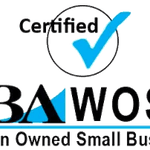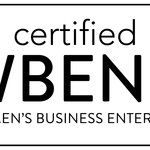Coaching supervision is increasingly recognized as essential to the effectiveness and professional development of coaches, whether working internally within organizations or externally as independent practitioners. Yet, the nuances between supervision for internal and external coaches often remain unexplored, leading to misunderstandings and inefficiencies. This article clarifies these distinctions and provides practical guidance for optimizing coaching supervision within each context.
Unique Considerations for Internal Coaches
Confidentiality and Trust
Confidentiality takes on heightened importance for internal coaches, who frequently navigate sensitive organizational dynamics. Internal coaches must manage delicate boundaries, balancing organizational loyalty and personal integrity. Trust becomes pivotal, influencing coaches’ willingness to openly discuss challenges that may involve peers, managers, or subordinates.
Contextual Understanding
Internal coaches benefit from deep organizational insight, allowing nuanced understanding of company culture, processes, and politics. However, this insider knowledge can also lead to assumptions or biases, potentially limiting objectivity. Effective supervision can help internal coaches maintain balanced perspectives, mitigating blind spots resulting from their embeddedness.
Logistics of Supervision
Organizations typically provide supervision for internal coaches, often through internal supervisors or contracted external providers. Selecting the right supervisor involves balancing cost-effectiveness, organizational familiarity, and impartiality. Internal supervision offers immediacy and relevant organizational context, while external supervision can offer greater neutrality, creating safer spaces for candid reflection.
Specific Topics Relevant to Internal Coaches
Internal coaches commonly face supervision topics such as maintaining clear boundaries, aligning coaching with organizational goals, and navigating stakeholder expectations. Addressing these proactively during supervision strengthens both coaching quality and professional resilience.
Considerations for External Coaches
Autonomy and Openness
External coaches usually enjoy autonomy in choosing their supervisors, allowing for greater openness in addressing vulnerabilities or professional challenges without organizational constraints. Supervision tends to focus exclusively on the coach-client relationship, providing deeper exploration of coaching competencies and personal development.
Different Supervision Focus
Without the direct organizational pressures internal coaches face, external coaches can prioritize coaching ethics, competency growth, and personal reflection. However, this freedom demands proactive alignment with their clients’ organizational contexts to remain effective and relevant.
Potential Contextual Gaps
External coaches might lack detailed insights into clients’ organizational cultures or dynamics, potentially limiting coaching effectiveness. Effective supervision for external coaches, therefore, emphasizes strategies for contextual self-education and adaptability.
Tailoring Supervision Approaches for Effectiveness
Recommendations for Internal Coaches
Internal coaches may benefit significantly from external supervision or mixed group supervision models, where perspectives from diverse organizational contexts can introduce fresh insights and reduce internal biases. Leveraging peer supervision or group supervision can also foster collaborative learning and strengthen trust within coaching communities.
Tips for Supervisors of Internal Coaches
Supervisors working with internal coaches must be especially mindful of confidentiality, organizational sensitivities, and power dynamics. Encouraging transparency about potential conflicts of interest and discussing strategies to handle sensitive situations can build confidence and effectiveness among internal coaches.
Navigating Unique Challenges
Internal coaches should consciously separate supervision discussions from organizational reporting structures. Supervisors can help internal coaches establish clear agreements about confidentiality boundaries, ensuring the coaching relationship remains protected and effective.
Brief Illustrative Scenarios
- Internal Scenario: An internal coach supervises a manager who reports indirectly to the coach’s superior. Supervision helps the coach navigate potential conflicts of interest, maintaining coaching effectiveness without breaching confidentiality.
- External Scenario: An external coach unfamiliar with a client’s organizational culture faces challenges interpreting feedback. Supervision guides the coach toward strategies for gathering contextual information discreetly, enabling more effective client engagement.
Conclusion
Effective coaching supervision significantly depends on the coaching context. Recognizing and addressing the distinct needs of internal and external coaches ensures supervision remains relevant, enhancing professional growth and coaching outcomes. Organizations and independent practitioners alike should proactively tailor supervision strategies, reinforcing trust, confidentiality, and contextual alignment.

Group Supervision Explained
Download our free Group Supervision brochure that answers all your questions about Group Supervision and how it can benefit YOU.
"*" indicates required fields
Explore Other Coaching Supervision Topics
About the Author
Cherie Silas, MCC
She has over 20 years of experience as a corporate leader and uses that background to partner with business executives and their leadership teams to identify and solve their most challenging people, process, and business problems in measurable ways.









